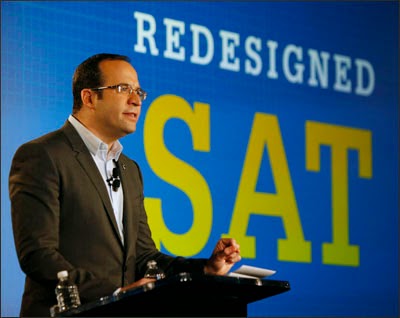A Continuos School-to-Prison Pipeline
While many
people might not be familiar with the phrase, School-to-Prison Pipeline,
thousands of students, overwhelmingly Latinos, African-Americans, and students
with disabilities, have been the targets of such practice. The school-to-prison
pipeline was coined to represent the educational system that continues to push
students out of the school setting and into the criminal justice system.
Policies such
as Zero tolerance and No Child Left Behind have led to an increase in the criminalization
of youth. Originally, the Zero tolerance policy was implemented during the
1980’s in low-income neighborhoods during the crack-cocaine epidemic, however
this has been tweaked to deal with any minor offenses or misbehavior that a
student might act upon. These could range from the way a student dresses, to
the way they speak to a teacher, and even bringing scissors to class, which I
find to be extremely absurd. In regards to the No Child Left Behind policy, standardized testing has
pressured schools into kicking out students who do not perform well, negatively
affecting the future of the student, and prioritizing the well-being of the
school and not that of the student.
Teachers who
have misused the Zero tolerance policy to suspend and expel students for such
minor or no misbehavior at all have crushed the dreams of many students who
wish to go back to school. Once students are expelled and/or suspended, which
are “often left unsupervised” for the time being, students either become less
interested in education or simply find it impossible to go back. Students who are expelled from a school usually cannot join another school in
the same district (which are usually closest to home) and therefore result in
an increase in the drop out rates. Overall, students are pushed out from the
system and into another (left with no guidance or support from counselors) and unfortunately
some dropping out and/or incarcerated.
In addition,
budget cuts that have resulted in a reduction of staff members that provide a
support system for the student (such as counselors, social workers, and
physiologists) have also paved a pathway for hopeless students getting into
drugs, street life, gang affiliation, dropping out, and incarceration in
prisons and juvenile halls. Since 1984 to 2009 there has been a 700% increase
in California’s prison population and a dramatic increase of suspension rates from 1.7 million in 1974 to 3.1 million in 2000. Research has also confirmed that gang alliance increases by 88% once involved
in a juvenile hall. Crime also increases once you enter the criminal justice
system.
When we take a
look at the educational system and its current mode of operation we can see how
school disciplinary policies have led to a system that perpetuates and
contributes to a consistent flow of criminalized youth into the criminal
justice system. However, when we focus on who are the individuals being
targeted, it becomes an issue of discrimination.
In an
info-graphic about the school-to-prison pipeline, the percentages highlight the racial disparity between
blacks and whites. It reveals that blacks are three times more likely to be
suspended form school, but even more shocking is that even when 16% of public
school enrollments are black students (a very some fraction compared to that of
51% of whites), blacks are 11% more likely in receiving multiple suspensions.
How could this be?
I personally
do not know why a system would continue policies that have revealed shocking
rates of criminalization, drop outs, suspensions/expulsions (all which have led
to a decrease in education within the population), nor am I sure how I would effectively
target this issue of criminalization and discrimination. However one thing I do have in mind is that the amount of
money jails get per person can be contributing to its perpetuation. The
criminal justice system has been making profit through
"contracts exchanged between private prison companies and state and local governments that either guarantee prison occupancy rates (essentially creating inmate lockup quotas) or force taxpayers to pay for empty beds if the prison population decreases due to lower crime rates or other factors (essentially creating low-crime taxes)".Therefore, efforts for rehabilitation are low and those of criminalization are high.
I am not
aware of any contracts between schools and prisons, but there could be some
correlation between these two systems. However if the education system is
actually concerned about the well being of the students and not the reputation
of the school, then as Chief Earl has said:
"In these days, it is doubtful that any child may reasonably be expected to succeed in life if he is denied the opportunities of an education. Such an opportunity, where the state has undertaken to provide it, is a right that must be made available on equal terms.”


